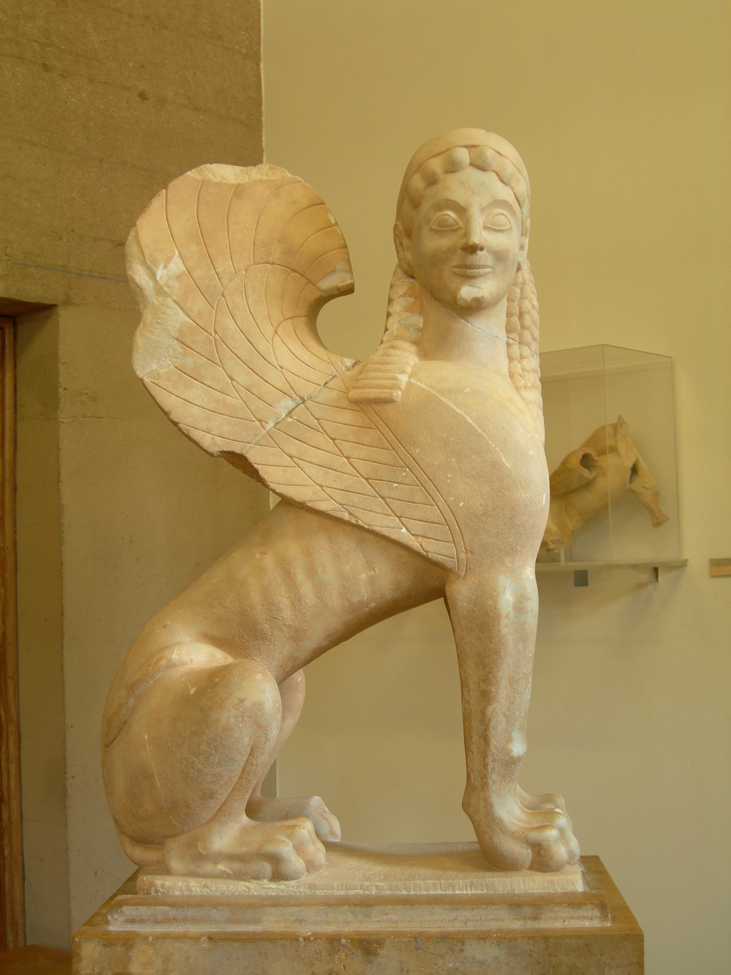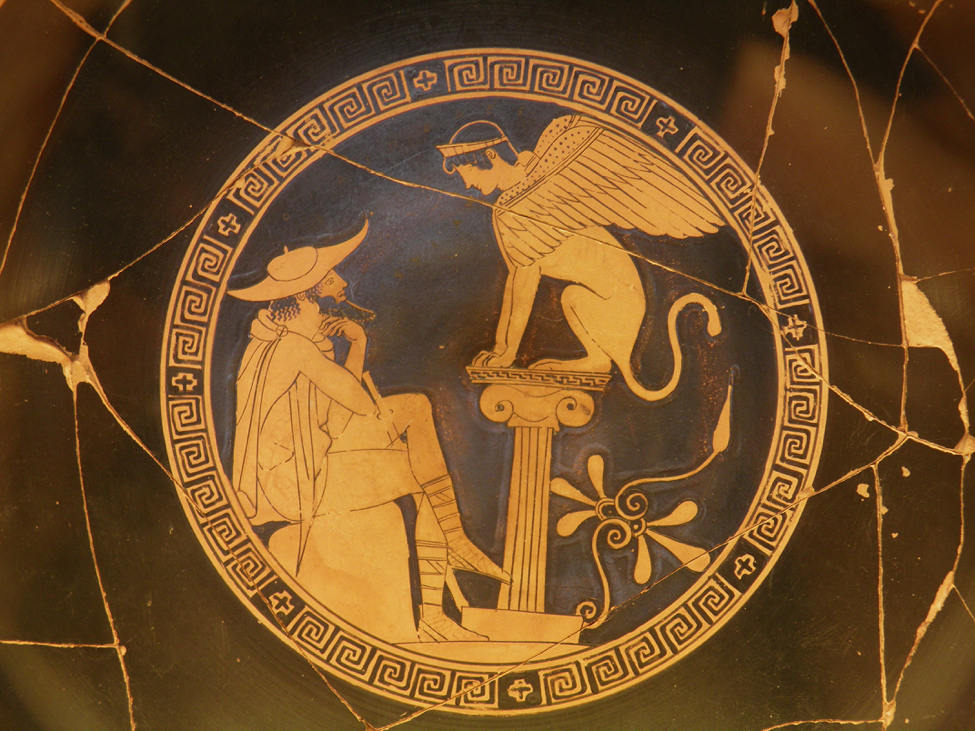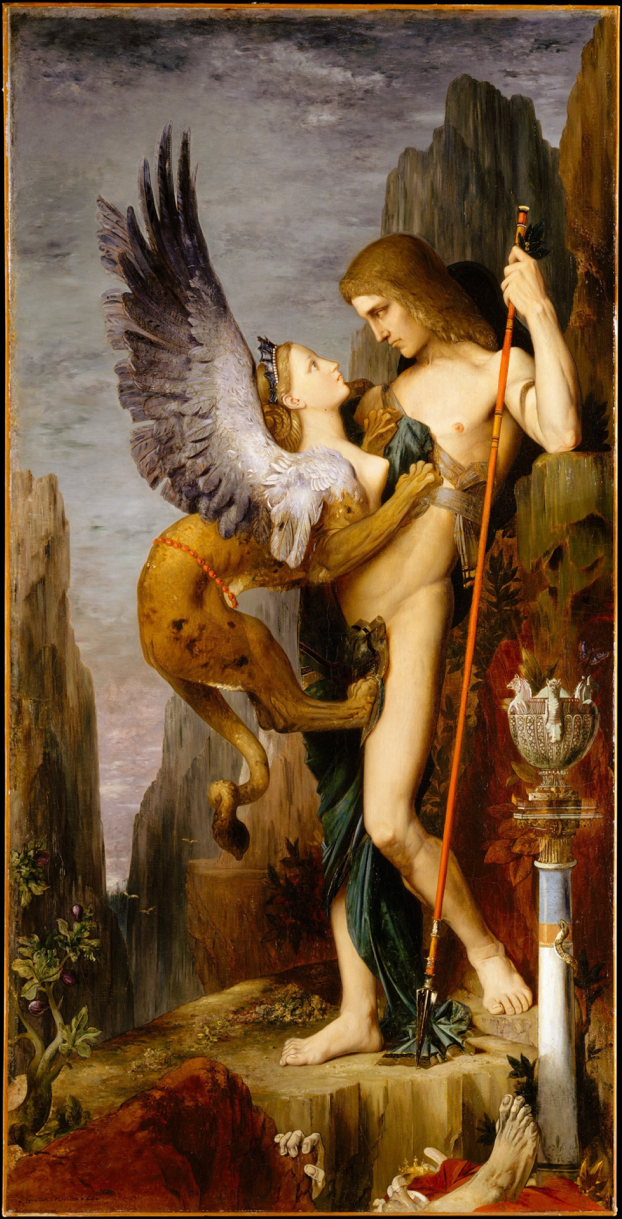Sphinx
The Greek sphinx was clearly inspired by the Egyptian sphinx, but the Greeks modified it and made it their own. The Greek sphinx had a woman’s face and breasts, a lion’s body, and a bird’s wings. The word sphinx is Greek (σφίγξ), and it means “strangler,” perhaps stemming from the fact that lionesses usually kill their prey by strangling it.
Since sphinxes were very intimidating, the Greeks frequently put them on gravestones, to frighten away would-be grave robbers. This use is called “apotropaic”—meaning “causing someone to turn away.” Most of the examples of ancient Greek sphinxes that we have today are from ancient gravestones.

In myth, there was one famous Sphinx, who turned up in Thebes shortly after its king, Laius, had been killed while on his way to consult the Delphic Oracle. This Sphinx flew on top of the city walls, and asked all the Theban youths a riddle. When they could not answer it, she ate them! At the time, Creon was the regent in Thebes (since Laius had died), and he was so desperate to get rid of the Sphinx that he promised the kingship and the hand of the widowed Queen Jocasta (who also happened to be his sister) in marriage to anyone who could solve the Sphinx’s riddle. This was the Sphinx’s riddle: “What goes on four feet in the morning, two feet in midday, and three feet in the evening?”

At around this time Oedipus came to Thebes (since he didn’t want to go back home to Corinth), and he solved the riddle. Oedipus said, “The answer is ‘man’. A man crawls on all fours in the morning of his life, he walks on two feet in the midday of his life, and he uses a cane for extra support when he is old.” The sphinx was so upset that Oedipus had answered the riddle correctly, that she threw herself down from the walls of Thebes and died.

So Oedipus was welcomed to Thebes as a hero. He married Queen Jocasta and became the King of Thebes. Oedipus and Jocasta had four children: Eteocles, Polynices, Ismene, and Antigone.

